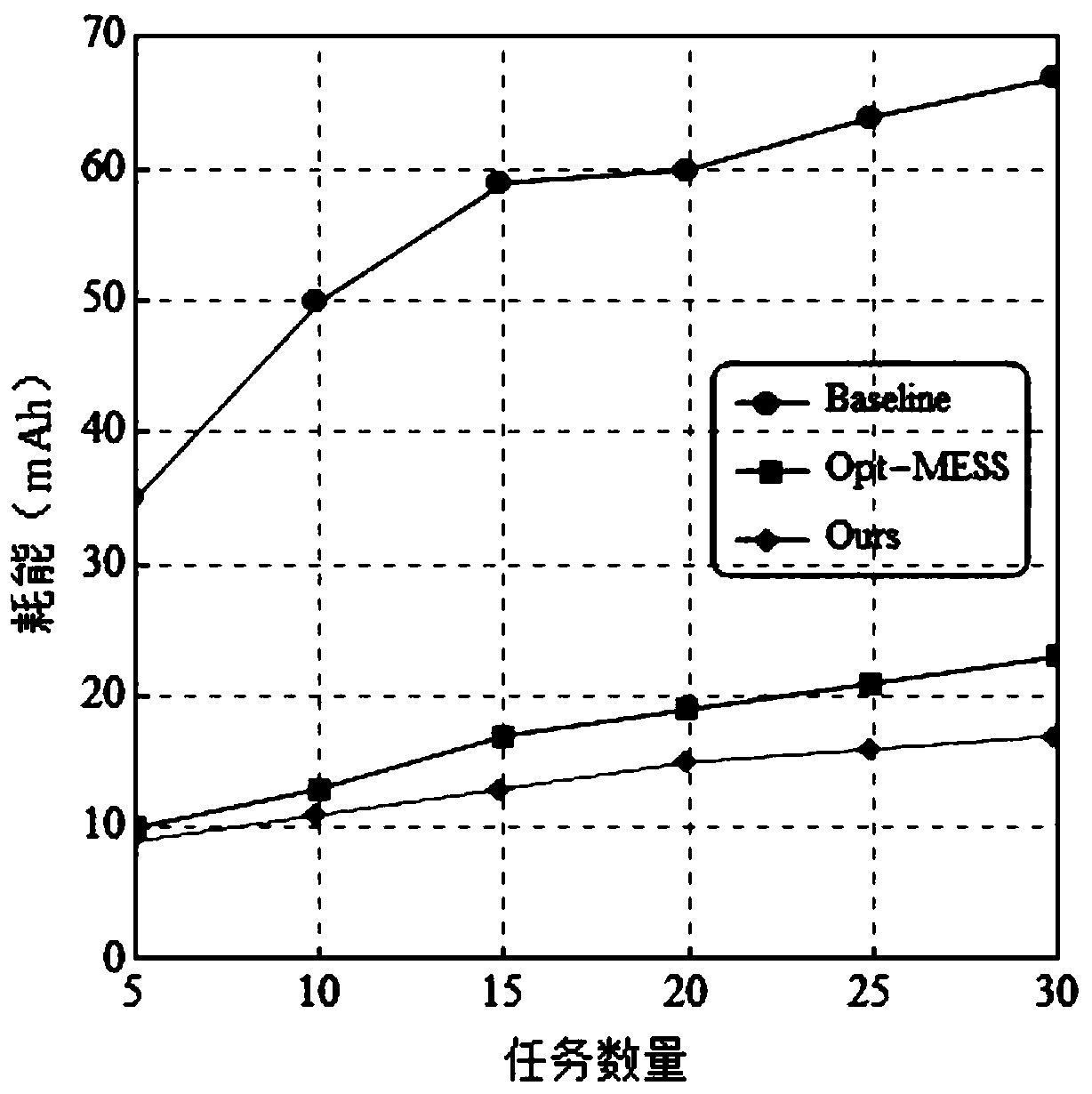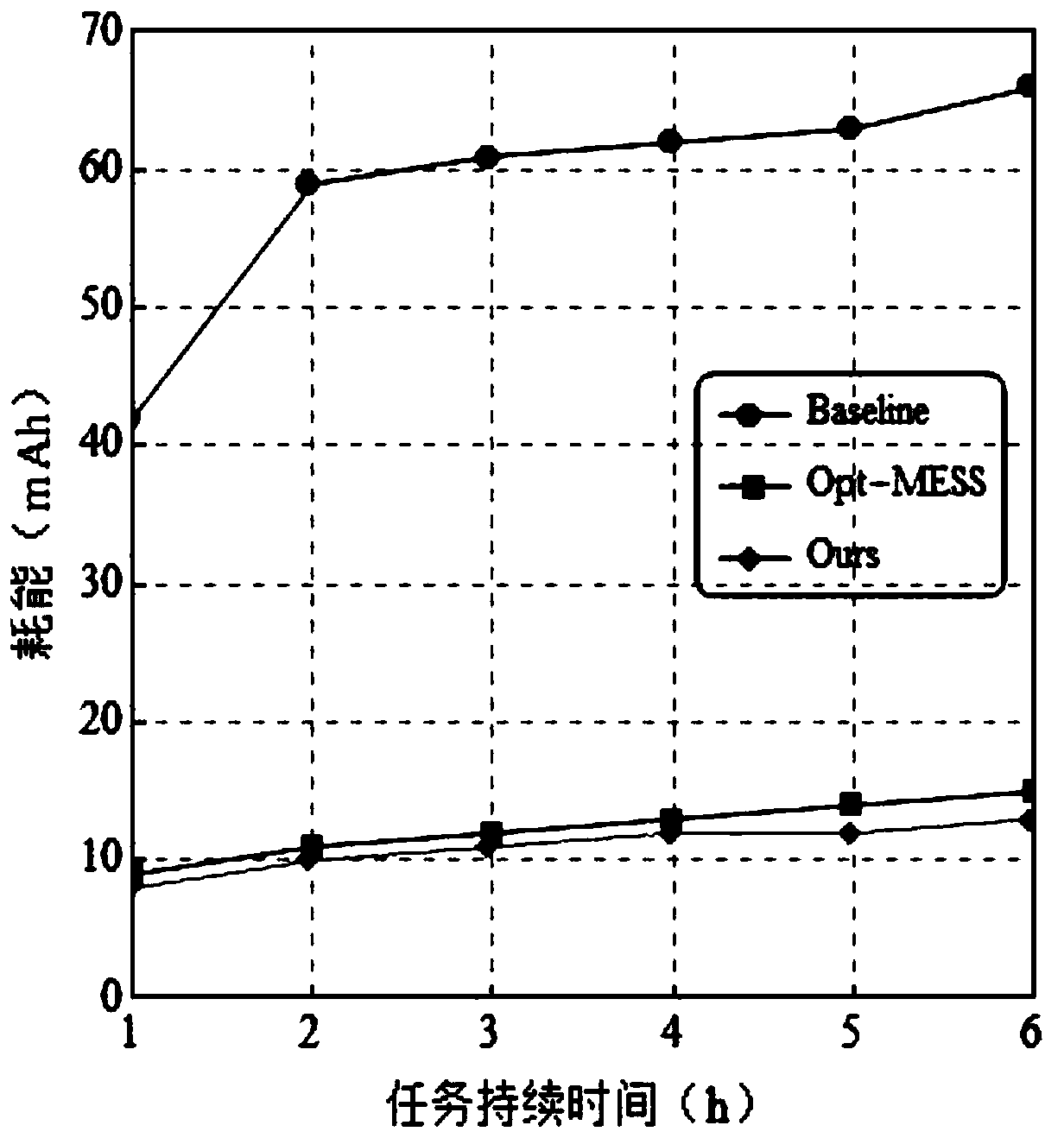High-energy-efficiency task scheduling algorithm based on Markov decision process
A task scheduling and energy-efficient technology, applied in energy-saving computing, computing, program control design, etc., can solve the problems of rapid power consumption, power consumption, and inability of smart phones
- Summary
- Abstract
- Description
- Claims
- Application Information
AI Technical Summary
Problems solved by technology
Method used
Image
Examples
Embodiment Construction
[0045] An energy-efficient task scheduling algorithm based on a Markov decision process, specifically comprising the following steps:
[0046] S1: Build a system model;
[0047] A multi-task mobile crowd-sensing system is built based on the two-tier architecture of the server and the client. The client is connected to the server through the network. The client regularly detects and summarizes the required data, and sends the exchanged data to the server; among them, the server is the group Smart-sensing server, the client uses a smart phone, because the smart phone operating system uses time-division multiplexing, its running load in an interval is the same, therefore, a discrete-time model is used in the calculation process, and the unit length is used as the interval as the calculation basis.
[0048] Perception task Task of the perception system t As shown in formula (1);
[0049] task t =(j,J j , S t , Q t ) (1);
[0050] In the formula, j represents the number of ...
PUM
 Login to View More
Login to View More Abstract
Description
Claims
Application Information
 Login to View More
Login to View More - R&D
- Intellectual Property
- Life Sciences
- Materials
- Tech Scout
- Unparalleled Data Quality
- Higher Quality Content
- 60% Fewer Hallucinations
Browse by: Latest US Patents, China's latest patents, Technical Efficacy Thesaurus, Application Domain, Technology Topic, Popular Technical Reports.
© 2025 PatSnap. All rights reserved.Legal|Privacy policy|Modern Slavery Act Transparency Statement|Sitemap|About US| Contact US: help@patsnap.com



